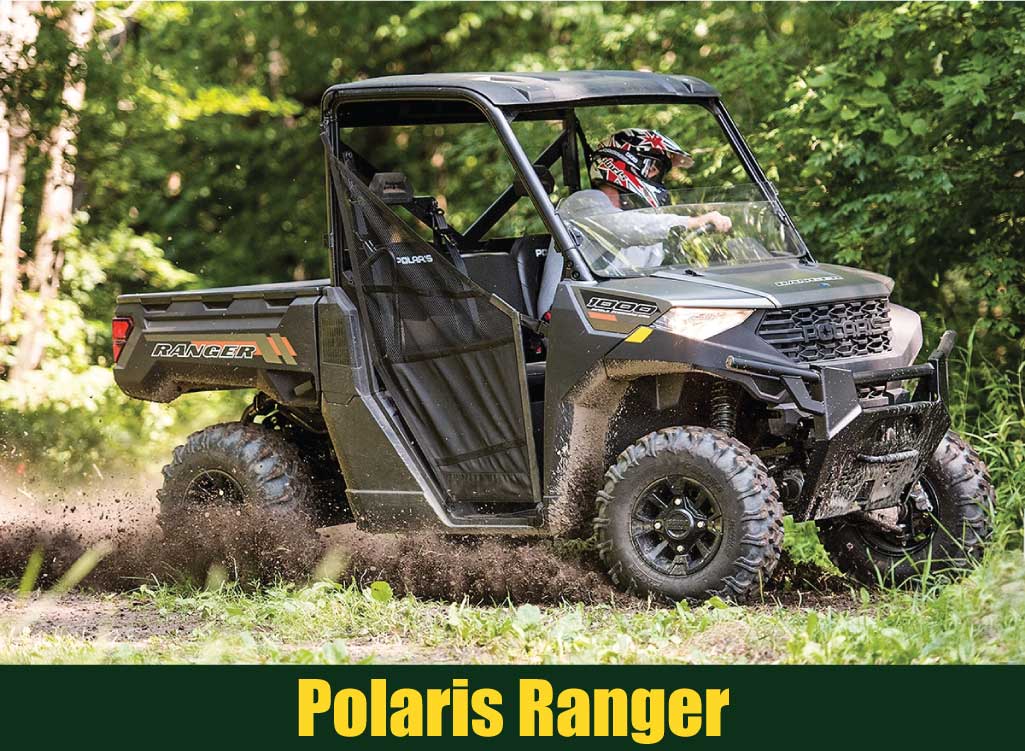
The Polaris Ranger 700 is a powerful UTV that resembles a 4×4 model. It has a liquid-cooled 683cc twin-cylinder engine that delivers 40 horsepower. In addition, Polaris has added electronic fuel infusion to the Ranger 700 engine. Furthermore, the larger engine includes an alternator with a 500-watt output capable of supplying additional lighting and electrical accessories.
However, the Polaris Ranger 700 is the flagship of four-wheel-drive off-road utility vehicles. It is the first utility vehicle to feature Electronic Fuel Injection, allowing for quick starts even in adverse temperatures and altitudes. It’s specifications include a maximum speed of 50 mph and a towing capacity of 1,750 pounds.
The Polaris Ranger is both suitable for home or a farm or while hunting in the dunes. However, if you want to transport more people and aren’t interested in extreme off-roading, this UTV may be for you.
So, let’s have a look at the most promising specifications and features of the Polaris Ranger 700.
Evolution Of The Polaris Ranger 700
1999—THE DAWN OF INNOVATION
The Polaris Ranger was the first generation of off-road vehicles manufactured and sold as a 6×6. With this Ranger, you could expect a comfortable ride, good speed, and an easier handling experience. As a result of this first set of upgrades, the Ranger was able to carry more weight than any other utility hauler on the market.
2005—CHANGE IN COMFORT FOR CONSUMERS
The mid-2000s were pivotal for Polaris riders as they refined their craft over the next six years. As a result of adding dual A-Arm rear suspension, Polaris wanted to ensure customers were comfortable. In addition, a larger powertrain was added to increase power. Are Polaris’ upgrades giving them an advantage over the most powerful UTVs? In our opinion, yes. There was a growing need for such a machine among farmers and ranchers alike, leading to its popularity.
Additionally, Polaris introduced the Lock and Ride Box accessory, which allows the Ranger to be equipped with a secure place to store tools and cargo. It is waterproof due to its molded plastic design. In the box’s interior, there are different compartments of different sizes for storing different items.
2009—PERFECTION IS A PROCESS
Almost a decade has passed since the Ranger lineup was introduced. In addition to the 6X6, the Ranger 800 is also available in 4X4. At this point, we began to see the Ranger used commercially. In addition to patrolling, disaster relief, and search and rescue, they are used by the military, police, and fire departments. Sports equipment and groundskeeping equipment were hauled by colleges.
There were 14 sub-models and special editions added to the Ranger collection over the next 8 years. The Ranger 800 is credited with taking Polaris from being an industry leader to being the industry leader. We are left wondering, does Polaris have any competition?
The answer is no this time. In terms of sales, Polaris is far and away the leader. For 2009, Polaris’ total sales were roughly $1.5 million, of which 5/8 came from the Ranger.
2013—INDUSTRIOUS WORK CAPABILITIES COLLIDE WITH EFFORTLESS RIDING
This new Polaris Ranger XP 900 model smashed Polaris’ own standards. Ranger’s new engine was the first to use the ProStar 900, making it the most powerful Ranger yet. What is the common theme here?
With this monster utility vehicle, power is everything. With 60 horsepower and incredible torque, this engine can make the hardest pulls in the industry. Polaris Industries showed off the power of this engine by hooking up the Ranger XP 900 to a dump truck at the 2013 Model Media Convention.
2017—THE POLARIS RANGER MAKES HISTORY
Polaris celebrated the production of a millionth Ranger in 2017. In the last two decades, the off-road industry has flourished, and Polaris continues to lead the way with its Polaris Ranger XP 1000. Compared to the Ranger XP 900, Polaris improved the Ranger XP 700 by more than a hundred improvements.
2019—QUALITIES OF A KING
It wasn’t even a year later that the Ranger Crew XP 1000 was released. As the king of utility side-by-sides, the Ranger Crew XP 1000 excelled at combining comfort, convenience, and power. In addition to hauling extra gear, towing larger trailers, and transporting more people, this Ranger was designed to handle extra load.
A stock Ranger Crew XP 1000 costsseats, a full-body skid plate, 27” Pro Armor Tires, and a 999cc ProStar engine with 82 HP. Currently, you can purchase a stock Ranger Crew XP 1000 for $20,399. Around this time, that’s a little higher than normal for base models. The following years saw the realization of something we had only heard rumors about.
What are the Specifications of the Polaris Ranger 700?
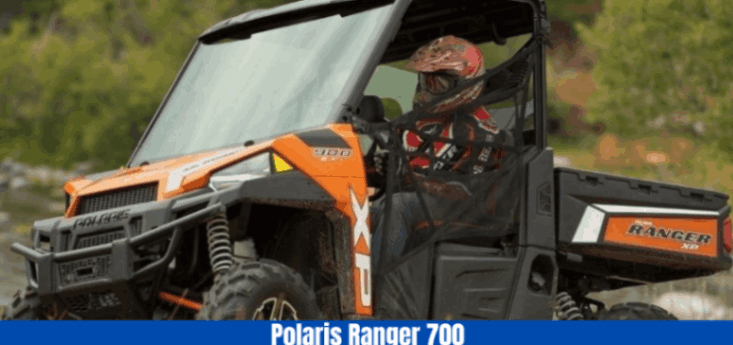
Dimensions of Polaris Ranger 700
- Turning Radius: 148in / 376cm
- Wheelbase: 76in / 193cm
- Dry Weight: 1185 lbs / 539 kg
- Length/Width/Height: 113x60x75in / 287×152.4×190.5cm
- Ground Clearance: 11 in
Engine details of Polaris Ranger 700
- Displacement/HP: 683cc / 40 HP
- Cooling: Liquid-Cooled
- Engine Type: Polaris twin cylinder
- Lubrication: Pressurized wet sump
- Oil Capacity: 2/1.9 qts/ltr
- Carburetion: Electronic Fuel Injection (EFI)
Suspension
- Front Suspension: MacPherson strut with 8.0 in of travel
- Rear Suspension: Independent 9.0in of travel
Load Capacity of Polaris Ranger 700
- Hitch Towing Capacity: 1750 lbs / 794 kg
- Vehicle Payload Capacity: 1500lbs / 681kgs
What are the Best Features of Polaris Ranger 700?
1. Hardest Working Features
- The Lock & Ride cargo system is included with the Polaris Ranger 700. Hence, it adds 1500 lbs to its overall payload, considerably increasing it.
- The 700 EFI engine on the UTV has a towing capability of 1 tonne (2,000 lb)/907.19 kg.
- The Ranger Contains a multipurpose speedometer.
2. Smoothest Riding Features
- The independent rear suspension on the UTV has the longest (9 in/ 22.9 cm) travel and offers a ground clearance of 11 in/ 27.9 cm.
- The electronic locking rear differential mechanism on the Polaris Ranger 700 is user-friendly.
3. Comfort Seating
The Polaris Ranger 700 is the only UTV that comes with seating for three people right out of the factory, thus making it difficult to categorize it as a “side-by-side.” Therefore, comparing this UTV to other models, the comfort of sitting gives it an advantage.
4. Extreme Size
The Polaris Ranger’s size is its most notable feature. Simply said, this UTV is much larger than a RZR or a rhino and similar to the Prowler in terms of size.
5. Suitable for all fueling solutions
In addition to handling ALL your fueling needs, the UTV can also COMPLEMENT ECU downloads or existing EFI controllers. Your tune-up’s performance can be tracked using the AFR gauge. By using EFI fueling, you can CONTROL any necessary fine tuning without spending additional funds or time.
Customization of AFR gauges
You can customize the gauge on the UTV e in three ways to make it look the best on your vehicle. You can choose between two different needle, label, and bezel options. There are two types of needles: orange and white.

6. Fully Programmable
With the help of an IrDA adapter, the UTV can be programmed. An online tuning environment called POWERLAB is used to develop setups. You can use the AFR+ as an add-on fuel trimmer or as a complete EFI controller that can automatically tune.
7. No need for a dyno
Tuning your vehicle with the UTV does not require you to be a mechanic or tuner or have access to a dynamometer. In real-world riding situations, the UTV gauge allows you to KNOW exactly how well your tune-up is performing. In order to adjust the drive cycle, the unit breaks it down into very understandable zones.
There are three basic zones to adjust: Idle/Cruise, Acceleration, and Full Throttle. This terminology is understandable to every rider. Tuning your vehicle yourself has the biggest advantage of being custom-made to fit your driving style.
8. Installation by plug-and-play
UTV units offered by us are all plug-and-play installations, which means you do not have to hard wire any electrical components. The majority of installations require welding an 18mm O2 bung into your exhaust pipe.
It is possible to use the O2 bung already in the pipe and replace the narrowband sensor with the wideband sensor in some installations. It is necessary to locate the OEM injector connections or a sub-harness connection on your vehicle in order to install the wideband controller. In most cases, you will only need to remove a few components to gain access to these injector connections.
If your vehicle has narrowband O2 connections, you will need to locate them for a number of new applications. Powered by the injector connections, the unit only requires a black ground wire attached to the negative terminal of the battery if present or by a metal screw to the frame of the vehicle. Generally, you can test-ride the controller after physically installing it.
9. Innovative load-based technology
Unlike most of its competitors, this controller uses Load Based Technology. A tuning technology known as Alpha-N is used by most EFI controllers. When tuning with Alpha-N, only Throttle Position (TPS) and RPM are used as factors. Rate, TPS, and RPM are the key adjustment factors in Load Based Technology.
Using load-based tuning, users can tune their vehicles for every gear and for every riding condition. An easy way to explain load is to state that riding uphill puts more “load” on the vehicle than driving on a flat road, but the same TPS and RPM are achieved in both cases.
10. Provides full-range tuning
Electronic Jet Kits are available for the EFI controller. A controller is similar to carburetor jet kits of the past in that it offers a variety of adjustments to tune your vehicle. This adjustability is built into the controller instead of physical jets and needles, so it is easy to adjust while riding the vehicle.
Essentially, all EFI vehicles have some software instead of hardware. With the controller, users can run a stock configuration, but add or pull fuel within easy-to-understand tuning zones while still maintaining a stock configuration.
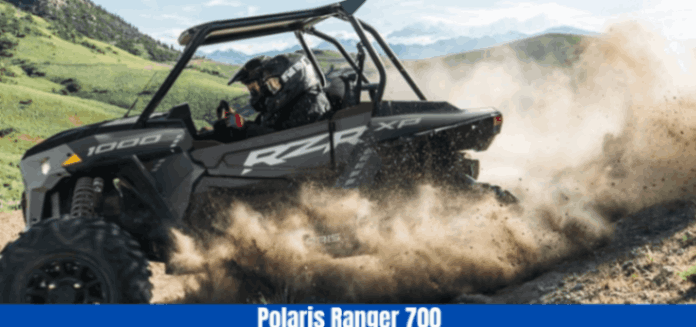
11. Does Not Interfere With Stock Ecu Operation
In addition to being a very common feature of all aftermarket EFI controllers, it needs to be stated for the sake of reassurance to all end users. It does not trip any engine codes or affect the ECU’s operation in any way.
12. Water-Resistant
In both the gauge and wideband controller, water-resistant materials are used to cover the hardware components. In contact with water-based substances, these parts would short-circuit since they are still electrical devices. Rainstorms, snow, washing your vehicle, etc. will not damage the parts, as they are not 100% water resistant.
13. Polaris Ranger 700 XP Parts
Polaris Rangers may be equipped with many aftermarket attachments, however, more of them are often intended for professional use. Such as winches, racks for weed eaters, and snowplows.
14. Polaris Ranger 700 TPS Adjustment System
The Polaris Ranger 700 TPS adjustment is a process carried out to make sure the TPS is appropriately set and provides accurate throttle position data to the engine management unit. There are several advantages to this UTV’s automated TPS system.
15. The Polaris Ranger 700 EFI
The Polaris Ranger 700 occasionally has an electronic fuel injection (EFI) system installed. The EFI system, which takes the place of conventional carburetors, monitors and modifies the fuel-air mixture for the best possible combustion using electronic sensors and an engine control unit (ECU). As a result, the fuel efficiency, throttle response, and emissions are all enhanced.
What is the Current Price of Polaris Ranger 700?
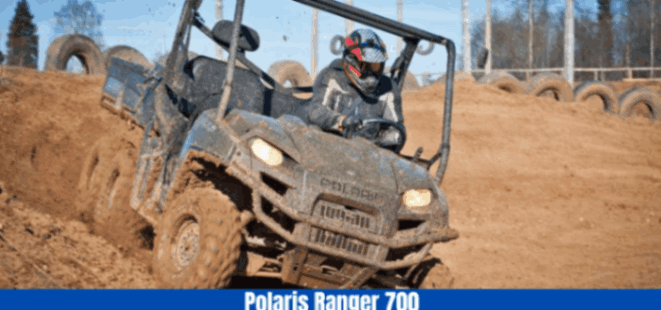
Polaris Ranger 700 prices might change depending on the model year, location, dealer pricing, and any extra features or options added. The price of a used Polaris Ranger 700 varied from roughly $8,000 to $12,000 USD based on the vehicle’s condition, mileage, and any aftermarket modifications. It’s important to keep in mind that costs may change over time owing to supply and demand factors in the market. Check with nearby Polaris dealerships or explore websites that focus on the sale of new and used utility vehicles for the most precise and up-to-date pricing information.
What are the Pros And Cons of Polaris Ranger 700?
A top-notch Polaris Ranger 700 XP for sale may be what you’re looking for these days. But before buying consider these major advantages and disadvantages of this UTV.
Pros
- The ride quality on any road is excellent.
- Capability to utilize it for multipurpose duties.
- Carrying four sizable passengers with ample room for elbows.
- Having a roof to provide shade.
- Easy for elderly men to enter and exit, with no need to elevate their legs over the four-wheeler.
- No concerns about whether the battery’s charge will be sufficient to get me home.
- Abundant ability to perform all practical and anticipated tasks.
Cons
- The 700 is extremely noisy. So noisy that you cannot carry on a fairly quick conversation.
- Can’t go where a four-wheeler can.
- It requires a larger trailer and more fuel to transport.
- Takes up more storage space.
- It takes more time to clean the UTV.
- Requires constant pressure on the accelerator and brake when driving downhill with the factory clutch to prevent freewheeling.
- In the summer, the rear seat gets heated over the engine.
Who are the Major Competitors of Polaris Ranger 700?
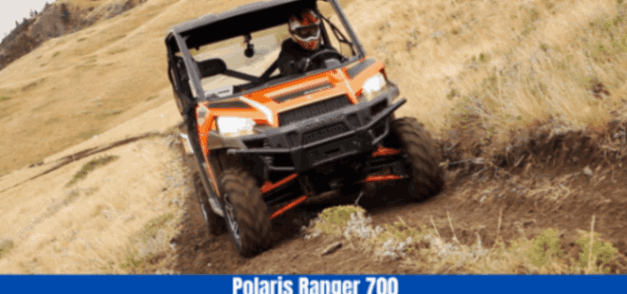
The Top competitors for Polaris Ranger are BMW F 850 GS Adventure, BMW F 850 GS, Triumph Tiger 900, Ducati Scrambler 1100, Suzuki Katana, Harley-Davidson Forty Eight, Aprilia RS 660, Ducati Multistrada 950, Moto Guzzi V85 TT, Aprilia Tuono 660.
However, compared with these models Polaris Ranger 700 can be ahead of others in several sectors.
First off, the Ranger is equipped as standard with variable-assist power steering. Moreover, the steering is very delicate. Hence, little more than a finger is required to steer the UTV through even the bumpiest off-camber turns while it is in all-wheel drive mode. Since the steering is stable and accurately regulated.
Second, despite having 1.5 inches more rear suspension travel than the Ranger XP, the Ranger’s self-leveling Nivomat shocks deliver an equally comfortable ride in the desert. In addition, the independent rear suspension’s 7.5 inches of total travel is maximized by the self-leveling, self-resetting Nivomat shocks.
Does the Polaris Ranger 700 Have Any Problems?
A few typical issues with the Polaris Ranger 700 have been reported. Some owners have reported experiencing electrical problems, such as troubles with the wiring harness, electrical shorts, and malfunctioning parts resulting in various electrical faults.
The Ranger 700 is susceptible to overheating, frequently caused by issues with the cooling system, blocked radiators, or broken temperature sensors.
The transmission and drivetrain are other areas to be concerned about because there have been instances of transmission failures, slipping belts, and driveline problems.
In addition, some owners have reported issues with suspension parts including worn-out ball joints or bushings. It’s crucial to keep in mind that these difficulties might not apply to all vehicles, and good usage and routine maintenance can help reduce or even eliminate some of these problems.
Verdict: A Backdated UTV!
The performance, adaptability, and longevity of the 700 and other UTV in the Polaris Ranger family have generally received praise. The majority of the time, it provided a smooth ride, great carrying and towing capacity, and the ability to go across rugged terrain.
The Polaris Ranger 700 XP years made from 2005 to 2009. However, it’s essential to remember that more recent Polaris Ranger models, like the Ranger XP 1000, have been released with improved features and technology. In comparison to the Ranger 700 model from the past, these more recent versions could have better performance, comfort, and convenience features.
Therefore, it’s critical to assess your unique requirements and use case before purchasing a UTV. So, if you’re searching for a used UTV that is capable of carrying out a range of activities, including hauling goods, towing a trailer, and traversing off-road terrain, it could be a suitable choice. However, if you need the most recent features and technology or want to use your UTV for more difficult activities, you might want to think about a newer model or a different brand.
Read more of our articles here.
FAQ
Does the Ranger 700 offer the option of 4WD or 2WD?
Yes, it is available in a variety of 2WD/4WD configurations. As a result, you may alternate between two-wheel drive for everyday driving and four-wheel drive for better grip on rocky terrain.
How much weight can the Polaris 700 tow?
Depending on the model and setup, the Polaris 700’s towing capacity might change. Generally speaking, it can pull up to 1,500 pounds (680 kg).
What popular upgrades are offered for the Ranger 700?
For the Ranger 700, Polaris provides a variety of accessories, including roof choices, windscreen alternatives, cargo racks, winches, plows, and lighting improvements. Additionally, there are several alternatives for seats, music systems, and storage.
Can I operate the Polaris 700 off-road?
It is built for usage off-road. To handle tough terrain, it sports a sturdy chassis, long-travel suspension, and high ground clearance. It is frequently utilized for farming, leisure riding, and other outdoor pursuits.
Where can I obtain Ranger 700 parts and services?
At Polaris stores, you may locate authentic Polaris components and authorized repair facilities. They can give your Polaris 700 with upkeep, repairs, and components thanks to their knowledge and resources.
Related:






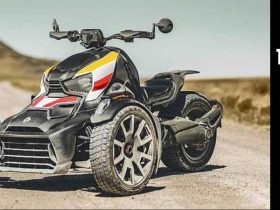
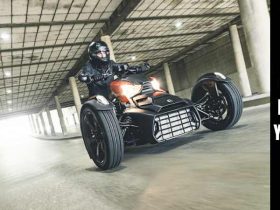
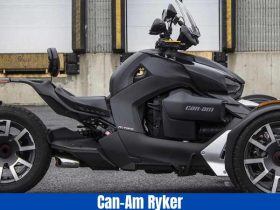
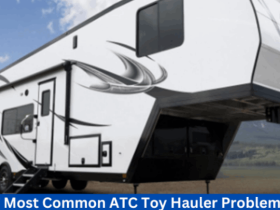
Leave a Reply